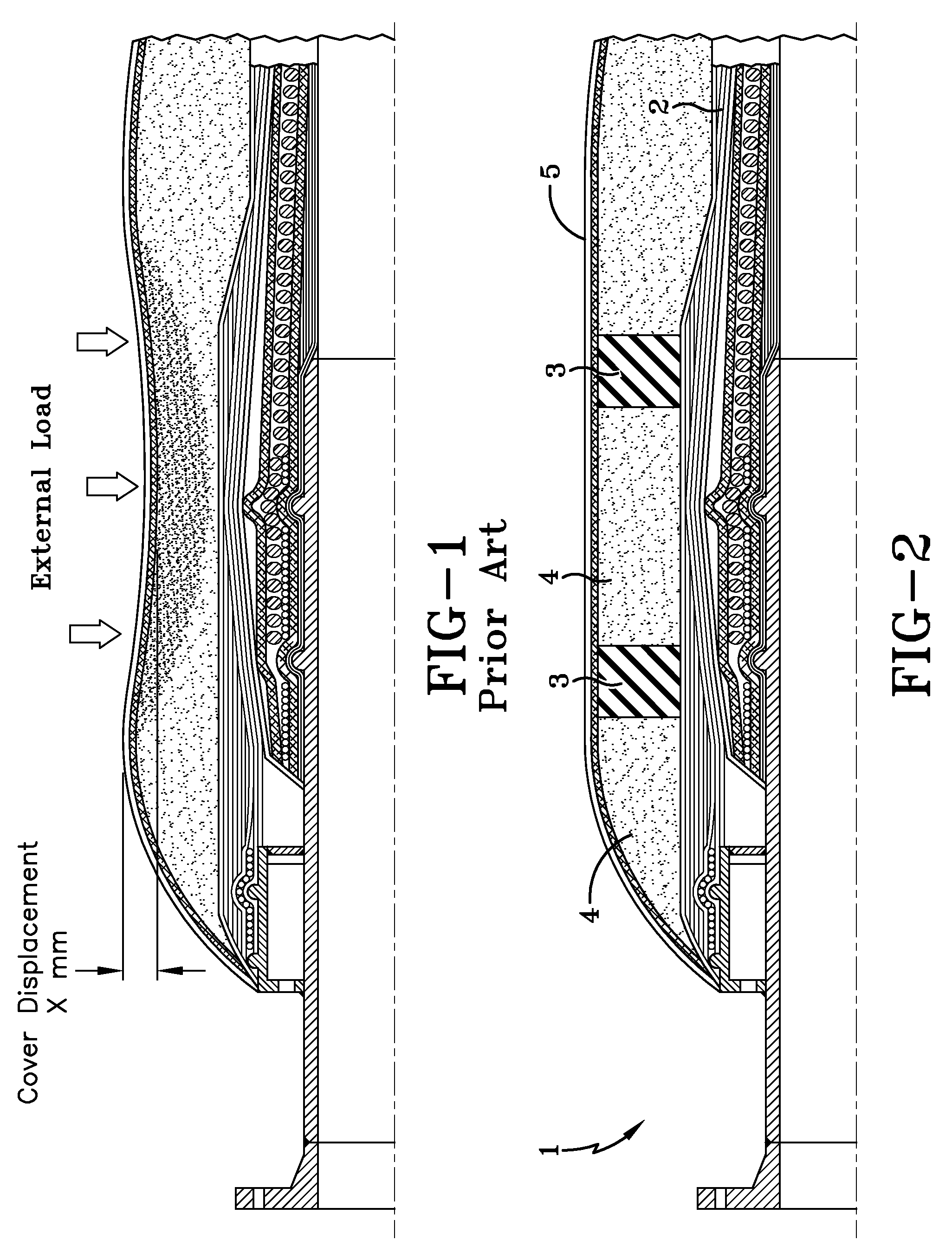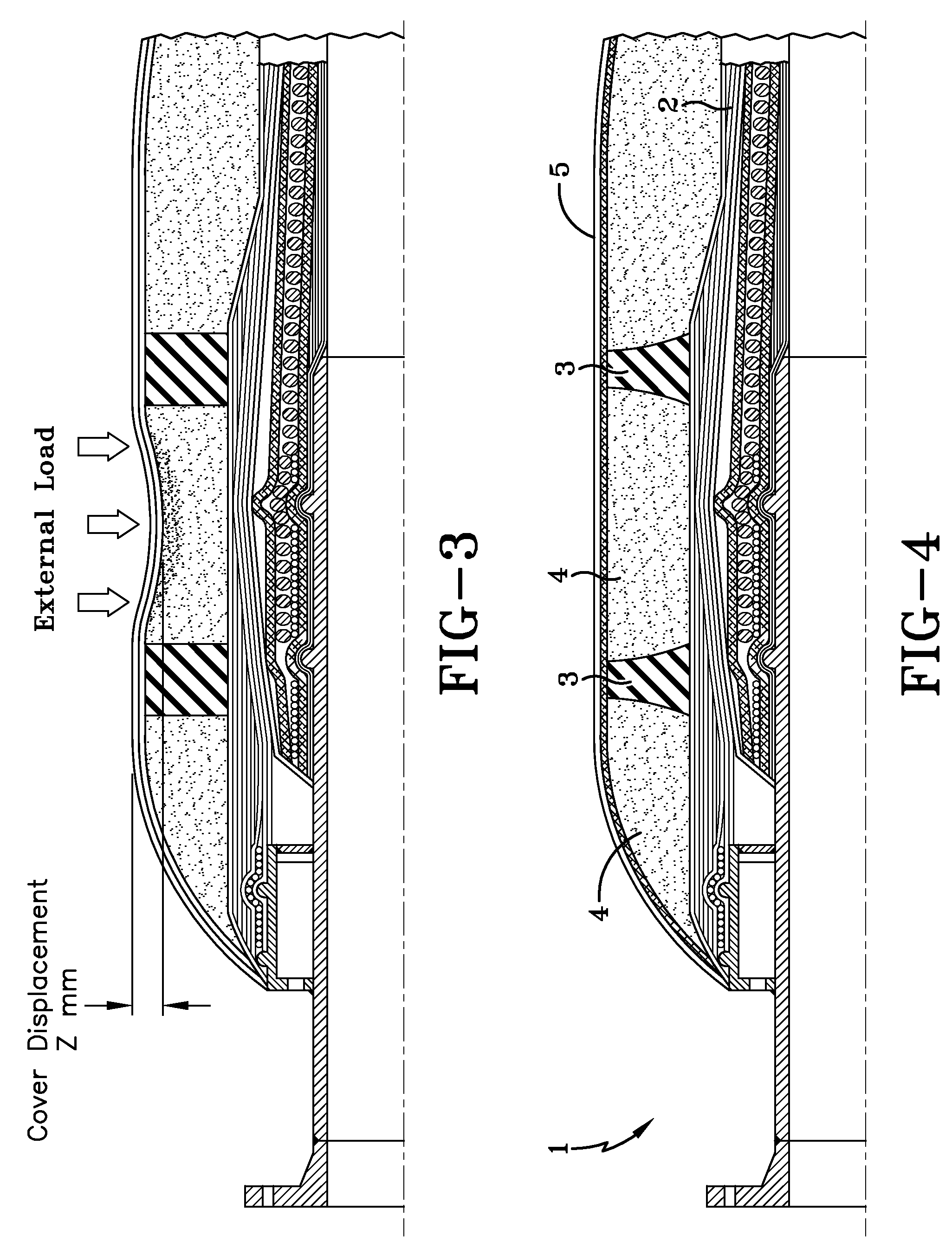Compression resistant floating hose for reeling applications
a compression-resistant, floating hose technology, applied in special-purpose vessels, liquid handling, closures using stoppers, etc., can solve the problems of floating hose damage, tack becomes even more difficult, and the propensity of floating hoses to lose buoyancy, so as to reduce the propensity of losing buoyancy
- Summary
- Abstract
- Description
- Claims
- Application Information
AI Technical Summary
Benefits of technology
Problems solved by technology
Method used
Image
Examples
Embodiment Construction
[0014]The floating hose 1 of the present invention as depicted in FIG. 1 includes a carcass 2 having an inside and an outside, a plurality of anti-compression collars 3 interspaced around the carcass, a floatation medium 4 surrounding the hose carcass and the anti-compression collars 3, and an outer cover 5. This type of floating hose typically has an inside diameter which is within the range of about 15 cm to 60 cm and an outside diameter which is within the range of about 25 cm to about 100 cm. It more typically has an inside diameter which is within the range of about 30 cm to 60 cm and an outside diameter which is within the range of about 40 cm to about 100 cm. For instance, many commercial floating hoses of this type have an inside diameter of 50 cm (20 inches) and an outside diameter of 95 cm (38 inches).
[0015]The carcass 2 is of a tubular shape and is typically comprised of a base submarine hose complete with end fittings. The hose carcass 2 is surrounded by a floatation med...
PUM
| Property | Measurement | Unit |
|---|---|---|
| length | aaaaa | aaaaa |
| length | aaaaa | aaaaa |
| internal diameter | aaaaa | aaaaa |
Abstract
Description
Claims
Application Information
 Login to View More
Login to View More - R&D
- Intellectual Property
- Life Sciences
- Materials
- Tech Scout
- Unparalleled Data Quality
- Higher Quality Content
- 60% Fewer Hallucinations
Browse by: Latest US Patents, China's latest patents, Technical Efficacy Thesaurus, Application Domain, Technology Topic, Popular Technical Reports.
© 2025 PatSnap. All rights reserved.Legal|Privacy policy|Modern Slavery Act Transparency Statement|Sitemap|About US| Contact US: help@patsnap.com



